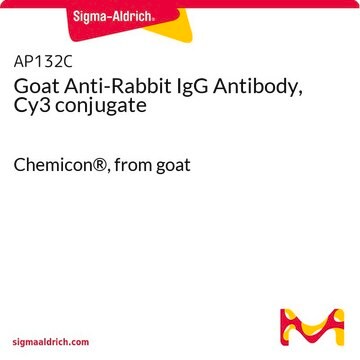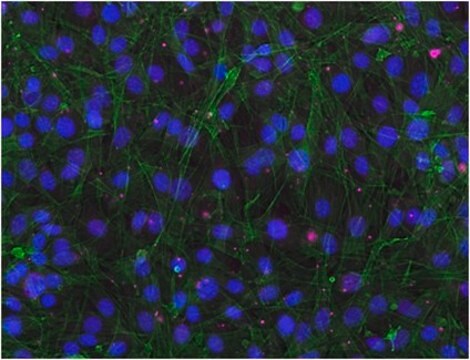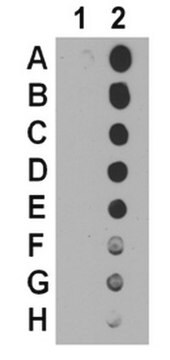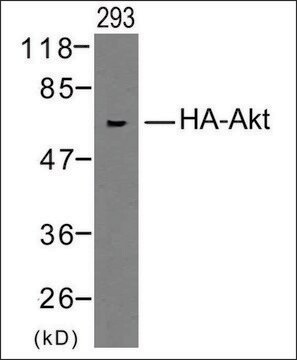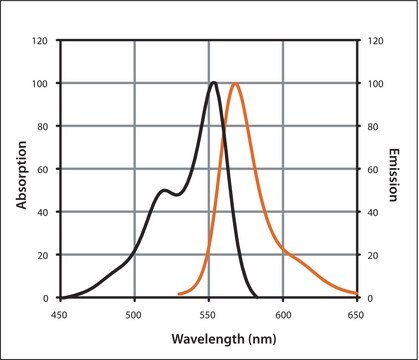AP187C
Goat Anti-Rabbit IgG Antibody, Cy3 conjugate, Species Adsorbed
1.5 mg/mL, Chemicon®
Sign Into View Organizational & Contract Pricing
All Photos(1)
About This Item
UNSPSC Code:
12352203
eCl@ss:
32160702
NACRES:
NA.46
Recommended Products
biological source
goat
Quality Level
conjugate
CY3 conjugate
antibody form
F(ab′)2 fragment of affinity isolated antibody
antibody product type
secondary antibodies
clone
polyclonal
species reactivity
rabbit
manufacturer/tradename
Chemicon®
concentration
1.5 mg/mL
technique(s)
immunofluorescence: suitable
shipped in
wet ice
target post-translational modification
unmodified
Related Categories
Specificity
Rabbit IgG (H+L) (absorbed for minimal cross-reactivity to Human, Mouse and Rat Serum Proteins)
FLUOROPHORE/ PROTEIN ABSORBANCE RATIO
Approximately 2.25-2.8(A552/A280) = 2.7
FLUOROPHORE/ PROTEIN ABSORBANCE RATIO
Approximately 2.25-2.8(A552/A280) = 2.7
Application
Research Category
Secondary & Control Antibodies
Secondary & Control Antibodies
Research Sub Category
Secondary Antibodies Adsorbed for Dual Labeling
Secondary Antibodies Adsorbed for Dual Labeling
Suggested dilution for most applications: 1:100-1:800 for most applications.
Optimal working dilutions must be determined by the end user.
Optimal working dilutions must be determined by the end user.
This Goat anti-Rabbit IgG Antibody, Cy3 conjugate, Species Adsorbed is validated for use in IF for the detection of Rabbit IgG.
Physical form
Lyophilized. Buffer = 0.01 M Sodium Phosphate, 0.25 M NaCl, pH 7.6 with 15 mg/mL BSA, and 0.05 Sodium Azide.
RECONSTITUTION:
Reconstitute to 1.5 mg/mL with sterile distilled water.
RECONSTITUTION:
Reconstitute to 1.5 mg/mL with sterile distilled water.
Storage and Stability
Maintain lyophilized product at 2-8°C for up to 12 months. After reconstitution the product is stable for several weeks at 2-8°C as an undiluted liquid. For extended storage after reconstitution, add an equal volume of glycerol to make a final concentration of 50% glycerol followed by storage at -20°C in undiluted aliquots for up to 12 months. Please note the concentration of protein (and buffer salts) will decrease to one-half of the original after the addition of glycerol. Avoid repeated freeze/thaw cycles.
Legal Information
CHEMICON is a registered trademark of Merck KGaA, Darmstadt, Germany
Disclaimer
Unless otherwise stated in our catalog or other company documentation accompanying the product(s), our products are intended for research use only and are not to be used for any other purpose, which includes but is not limited to, unauthorized commercial uses, in vitro diagnostic uses, ex vivo or in vivo therapeutic uses or any type of consumption or application to humans or animals.
Not finding the right product?
Try our Product Selector Tool.
Hazard Statements
Precautionary Statements
Hazard Classifications
Aquatic Chronic 3
Storage Class Code
11 - Combustible Solids
WGK
WGK 3
Certificates of Analysis (COA)
Search for Certificates of Analysis (COA) by entering the products Lot/Batch Number. Lot and Batch Numbers can be found on a product’s label following the words ‘Lot’ or ‘Batch’.
Already Own This Product?
Find documentation for the products that you have recently purchased in the Document Library.
Estrogen and androgen receptor expression in surface epithelium and inclusion cyst in the ovary of premenopausal and postmenopausal women.
Mendez, C; Morales-Vasquez, F; Perez-Montiel, D; Gomora, MJ; Espinola-Zetina et al.
Journal of Ovarian Research null
Xufeng Dai et al.
Investigative ophthalmology & visual science, 55(3), 1724-1734 (2014-02-22)
The retinal degeneration 11 (rd11) mouse is a newly discovered, naturally occurring animal model with early photoreceptor dysfunction and rapid rod photoreceptor degeneration followed by cone degeneration. The rd11 mice carry a spontaneous mutation in the lysophosphatidylcholine acyltransferase 1 (Lpcat1)
Hua Zhang et al.
Journal of ophthalmology, 2017, 9721362-9721362 (2017-02-09)
The retinal degeneration 11 (rd11) mouse is a new animal model with rapid photoreceptor degeneration. The long-term efficacy of gene therapy has a direct relationship with the onset of photoreceptor degeneration or apoptosis, whereas the degeneration or apoptosis patterns of
Hee Yeon Kay et al.
The Journal of clinical investigation, 125(10), 3904-3914 (2015-09-09)
Valproic acid (VPA) has been widely used for decades to treat epilepsy; however, its mechanism of action remains poorly understood. Here, we report that the anticonvulsant effects of nonacute VPA treatment involve preservation of the M-current, a low-threshold noninactivating potassium
Xiaohong Yao et al.
PloS one, 8(3), e57188-e57188 (2013-03-29)
Human glioblastomas (GBM) are thought to be initiated by glioma stem-like cells (GSLCs). GSLCs also participate in tumor neovascularization by transdifferentiating into vascular endothelial cells. Here, we report a critical role of GSLCs in the formation of vasculogenic mimicry (VM)
Our team of scientists has experience in all areas of research including Life Science, Material Science, Chemical Synthesis, Chromatography, Analytical and many others.
Contact Technical Service